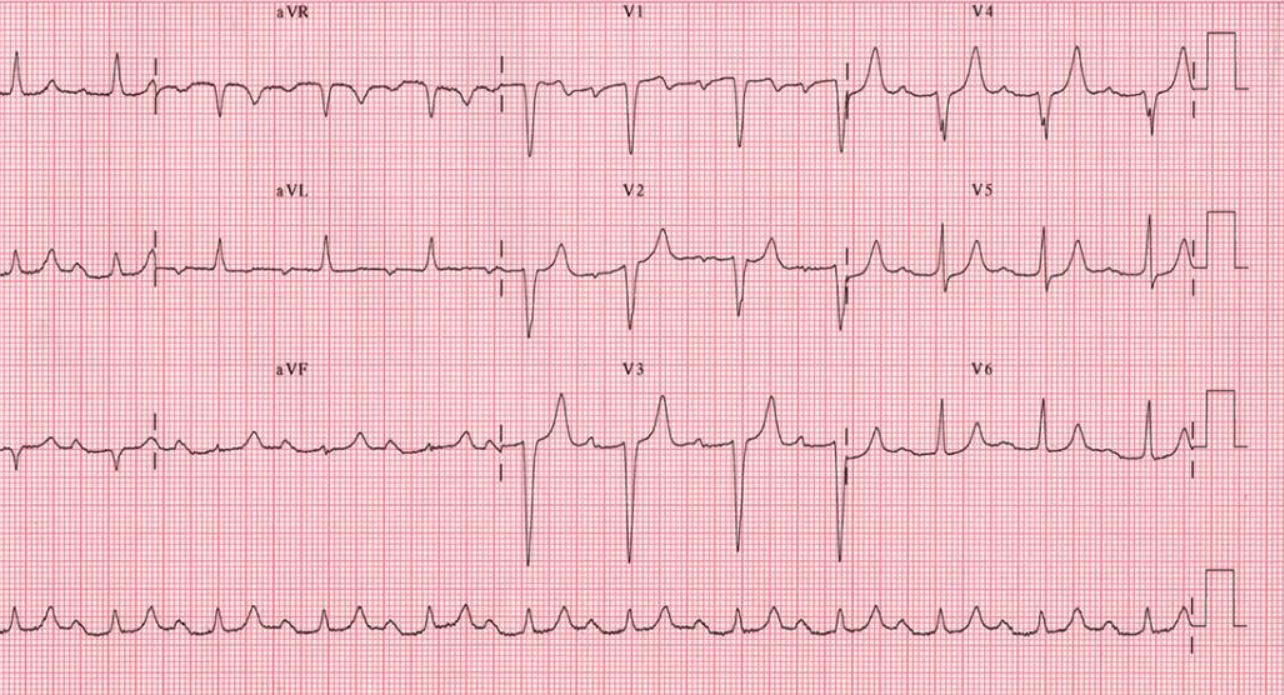Playlist
Show Playlist
Hide Playlist
Third Degree Heart Block
-
Slides Bradyarrhythmia CardiovascularPathology.pdf
-
Download Lecture Overview
00:01 Now we are going to third-degree AV block. 00:02 What is happening here? No correlation, of what? No correlation of the P waves to the QRS complex and the reason for that? Well. If your patient has suffered myocardial infarction, gone is the heart. And if the heart is not working properly and you cannot control, or should I say SA node cannot control the rest of the conduction system, the impulse is not being originated from the SA node. The P wave might be there, but is not continuing any further through the AV node. So the complete third-degree AV block. "But Dr. Raj, I see QRS complexes, where is that coming from?" You know the entire heart intrinsically is a pacemaker. 00:45 So once the SA node loses its control, the QRS complex will still be present. The ventricle is still going to originate or develop a QRS complex. That is called a ectopic foci. 00:59 Therefore, the atria beats at their own rate. The intrinsic ventricular rate is about 30 beats per minute. Patients are very symptomatic as you can imagine. Treatment, placement of a permanent pacemaker with third-degree AV block. There's really no other ways to do this and you need to make sure that you get everything back in order. With third degree AV block, you have noticed the bottom strip once again, there is no correlation between that P wave and that QRS complex. And when the QRS complex do show up, well it is bizarre looking. Where is that QRS complex coming from? It is not the SA node that is in control. 01:37 It is the fact that you have an ectopic foci. No correlation.
About the Lecture
The lecture Third Degree Heart Block by Carlo Raj, MD is from the course Arrhythmias: Basic Principles with Carlo Raj.
Included Quiz Questions
What is the rate of the intrinsic ventricular pacemaker?
- 30 bpm
- 70 bpm
- 100 bpm
- 50 bpm
- 10 bpm
Which of the following is true regarding a complete heart block?
- The atrial impulse is not conducted to the ventricles.
- A QRS complex drops every few cycles.
- The PR interval is progressively prolonged.
- It is typically asymptomatic.
- The definitive treatment is with medication.
Customer reviews
4,0 of 5 stars
| 5 Stars |
|
0 |
| 4 Stars |
|
1 |
| 3 Stars |
|
0 |
| 2 Stars |
|
0 |
| 1 Star |
|
0 |
Great lecture as always, but could be improved with more depth into the morphology of how the QRS complexes can be either narrow or wide depending on the site of the block. Could also be improved through: - A list of specific symptoms a patient with the condition would experience - ECG interpretation in the quiz section






